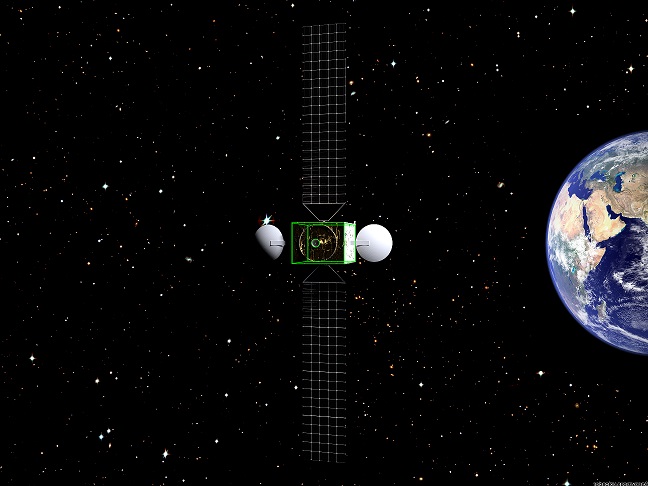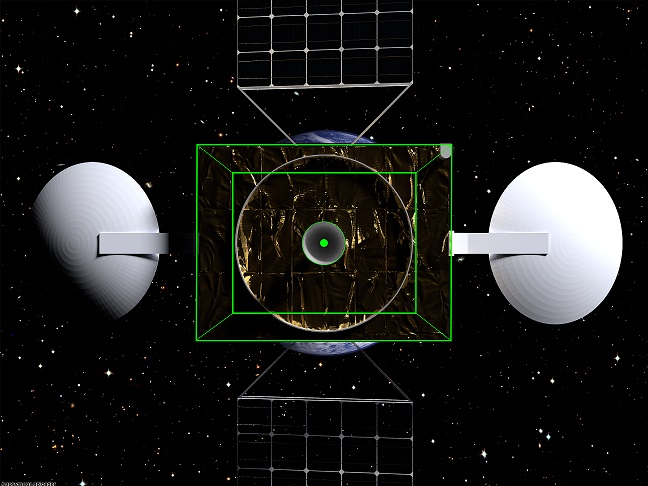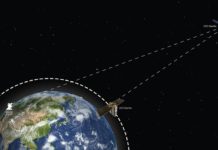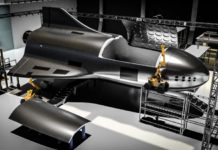Infinite Orbits is a Singapore/UK-based in-space satellite servicing company. Founded in early 2017, the company is focusing on life extension and bring into use services for Geostationary Communication Satellite (GEO COMS) operators. Infinite Orbits aims to launch a demonstration mission in 2020, and life extension satellites in 2021 or 2022.
SpaceTech Asia speaks to Infinite Orbits’ CEO Tamas Sarvary to find out more about the company’s history, technology, and long-term plans.
How did Infinite Orbits start? Why did you decide to come to Singapore?
Infinite Orbits emerged from a 2016 university NASA challenge focusing on asteroid anchoring – myself and some team members of that project were thinking about how to apply asteroid mining technologies in the current space industry.
Asteroid mining is far from commercial viability, but other technological tools like in-space tracking technologies were within reach. They’re also crucial for enabling activities like asteroid mining, tracking tools have many present and future applications. They additionally enable some very interesting use cases that we knew we could develop in space – such as satellite life extension, active debris removal, and space situational awareness.
We settled on Singapore because we received initial funding from the telecom industry in South East Asia. This allowed us to validate and refine Infinite Orbit’s concepts through conversations with satellite and telecom operators in the region, and enter it as our target market.
What are you currently focusing on and why?
We focus on life extension and bring into use services for GEO COMS satellite operators. We build satellites that track and mechanically dock onto communication satellites, and provide 5 years of extra fuel for them to operate.

Our Endurance life extension satellite enables companies to realise up to US$10m to $15m in incremental revenue every year, which translates to $50m to $75m over 5 years.
Bring-Into-Use (BIU) services are designed to preserve hard fought spectrum rights. We combine these with our life extension technology to extend the lifecycle of a GEO asset and create a satellite exchange between operators and orbital slots. The goal is to optimize the use of spectrum for GEO systems.
For operators, this is cheap alternative to acquiring capacity. Instead of buying a traditional replacement satellite, which can cost as much as $200m, we simply extend its lifecycle. That’s substantially more for a new GEO space asset, especially in the current environment of falling prices.
What is the technology behind your life extension and BIU services?
The core technology we are focused on is in Guidance, Navigation and Control (GNC). It enables precision mobility in space and relies heavily on automation to be able to avoid ground-based, manual control, which will be less reliable in the future.
Due to the technical and environmental complexities of space, automation is even more mission critical in space than with Earth based services such as self-driving cars.
We are developing a small module to place on, and track, space objects. We’ll use that information to guide our own satellite towards it and execute a rendezvous.

The key innovation is using artificial intelligence to make a rendezvous target agnostic. That allows us to modify the system at low cost and with low lead and development times. Put plainly, we can track and physically connect with any space object such as GEO satellites, LEO satellites, debris or asteroids.
Our first use case for our technology is life extension for current GEO assets, but we see greater scope for it like active debris removal in LEO constellations. We also see its application in more complex robotics such as in-space repair and augmentation.
What sets you apart from other life extension services out there?
What sets Infinite Orbits apart is our cost – life extension is a difficult business case to crack, and by working closely with new space suppliers and insurers, we are able to offer a model which makes sense for most satellites around the world. In addition, regional strategies matter a lot in space, and we’ve had different approaches for Asia, Europe and the US for fundraising, regulatory, technology and commercial activities, which has enabled us to develop a truly international effort and get the best of all worlds.
Have you raised funds or secured partnerships?
To date, we’ve raised funding from angel sources and the European Space Agency – we have a UK entity that has successfully received an ARTES grant in support of our core technology development.
Before tackling the full life extension service, we’re focused on developing our in-orbit demonstration mission and BIU capabilities. We are negotiating for further funds beyond angels and grants, and are in discussions with strategic investors, venture capital firms, and family offices.
We have close partnerships with ESA and Prof. Simone D’Amico’s Space Rendezvous Laboratory at Stanford University for research. We are in advanced negotiations with several commercial operators around a joint venture for both BIU and life extension services.
We’re also considering commercial partnerships, such as creating a joint venture where we combine our IP with a partner that holds satellite assets and operational experience.
What are some of your long-term plans?
In the future, we’re looking at cislunar cargo transport, asteroid prospecting and manufacturing activities.
Our aim is to create low cost services and technologies that contribute to a private cislunar economy. We want to make new space an economic reality outside of low earth orbit.
The ultimate goal of Infinite Orbits is to catalyze the development of a self-sustaining space economy.
The biggest issue with space today is the massive capital requirement, which stops startups and organisations from accessing the industry and developing novel products and services. The game is limited to large companies and governments with little appetite to try new things.
The current players tend to develop proprietary, and very customized, systems. This keeps other companies from developing in-space capabilities and services that could build on top of what already exists.
This won’t last forever, innovation led high growth industries have demonstrated time and again this sort of ringfencing doesn’t last. Take the internet: it doesn’t make sense for everyone to own computers to store data and develop applications. We rely on data centers, search engines and other complex services to transform individual systems into a self-sustaining, interconnected architecture where personal devices become just the interface.
This is Infinite Orbit’s plan – in space, to move from individual hardware systems and isolated single missions to overarching services that rely on several parts of the in-space infrastructure.
We want in-space activity to move from individual missions to a true collaborative in-orbit ecosystem, one that sustains itself and expands on its own.
The distributed and modular systems our technology enables will allow us to move hardware and cargo between space systems, fly constellations of different types of specialized satellites, continuously develop this infrastructure, and enable more complex services to be built. That’s the Infinite Orbits endgame and a boon for those in today’s space race.







